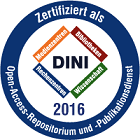Friedrichs, Paula: Nutritional strategies and their influence on the expression of nutrient sensing G protein-coupled receptors in adipose tissue of dairy cows. - Bonn, 2015. - Dissertation, Rheinische Friedrich-Wilhelms-Universität Bonn.
Online-Ausgabe in bonndoc: https://nbn-resolving.org/urn:nbn:de:hbz:5n-42245
Online-Ausgabe in bonndoc: https://nbn-resolving.org/urn:nbn:de:hbz:5n-42245
@phdthesis{handle:20.500.11811/6281,
urn: https://nbn-resolving.org/urn:nbn:de:hbz:5n-42245,
author = {{Paula Friedrichs}},
title = {Nutritional strategies and their influence on the expression of nutrient sensing G protein-coupled receptors in adipose tissue of dairy cows},
school = {Rheinische Friedrich-Wilhelms-Universität Bonn},
year = 2015,
month = dec,
note = {Adipose tissue (AT) plays a central role in the regulation of metabolism at the onset of lactation as a major contributor of energy through the mobilization of nonesterified fatty acids. This time period is especially crucial, because the feed intake does not increase to the same extent as the energy requirements for milk synthesis. To improve the metabolic situation of dairy cows during this time, different nutritional interventions can be applied. A pivotal role in the coordination of metabolic processes is taken by nutrient sensing G protein-coupled receptors (GPCR), which can modulate, for example adipocyte metabolism as a consequence of the extracellular availability of nutrients. The main objective of this thesis was to study the effect of conjugated linoleic acids (CLA), nicotinic acid (NA) and dietary energy density on the mRNA expression of different GPCR relevant for nutrient sensing, namely the free fatty acid receptors (FFAR) 1, 2, and, 3 and hydroxycarboxylic acid receptor (HCAR) 2, in bovine AT. Additionally, this thesis investigated the difference in the mRNA expression of the aforementioned receptors between AT from subcutaneous (SC) and visceral (VC) locations. Moreover, their mRNA expression from late pregnancy up to the entire following lactation cycle with special emphasis on the transition period have been studied. For these purposes, separate feeding trials were conducted. In the CLA-1 trial, the mRNA abundance of FFAR 1 and 2 and HCAR2 was measured in AT biopsies (SC AT from tail head) from multiparous cows (n=21) taken at d -21, 21, 105, 196, and 252 relative to calving. In the CLA-2 trial, the mRNA abundance of FFAR 1, 2 and 3 and HCAR2 was measured in AT samples from 3 SC depots (tail head, sternum, and withers) and from 3 VC depots (retroperitoneal [RP], mesenteric, and omental) from primiparous cows slaughtered at d 1 (n=5), 42 (n=10) and 105 (n=10) relative to calving. In both trials, the animals were allocated either to a group receiving CLA or to a group receiving a control fat supplement for the period of d 1 to 182 (CLA-1 trial) or d 1 to 105 (CLA-2 trial) of lactation. In the NA trial, 20 multiparous cows were divided into a group fed a diet supplemented with NA and a group fed a diet without supplemented NA. Half of each group was fed either a high-concentrate (HC, n=10) diet with a 60:40 concentrate-to-roughage ratio or a lowconcentrate (LC, n=10) diet with a 30:70 concentrate-to-roughage ratio on a dry matter basis from d 1 to d 21 relative to calving. The mRNA abundance of FFAR 1, 2 and 3 and HCAR2 was measured in biopsies of SC AT (tail head) and RP AT obtained at d -21, 1 and 21 relative to calving. In all trials, the mRNA abundance of the target genes was measured by quantitative PCR. The effects of CLA on the investigated AT were limited to the mRNA abundance of FFAR1 in the omental and RP AT of the primiparous animals (CLA-2 trial), whereby in both tissues the mRNA abundance of FFAR1 was higher in the CLA-treated animals than in the control animals at d 105 relative to calving and in RP AT additionally at d 42 relative to calving. The supplementation of NA to the animals’ diet showed no influence on the herein investigated receptors’ mRNA expression in SC and RP AT. However, the mRNA abundance of FFAR2 was altered due to the different energy densities of the diet fed the first three weeks after calving. At d 21 after calving, the FFAR2 mRNA abundance was 2.5-fold higher in the RP AT of the LC cows than in the HC cows. The expression of FFAR3 mRNA was inversely related to FFAR2 mRNA, with a lower FFAR3 mRNA abundance at d -21 than at d 1 relative to calving. The mRNA abundance of HCAR2 in AT was not influenced either by the different applied nutritional strategies or by the progress of the transition period. In summary, the effects of the different nutritional strategies on the expression of the nutrient sensing receptors investigated herein were rare or, in the case of NA, absent. The results of the present thesis provide to the basic understanding of the regulation of FFAR 1, 2 and 3 and HCAR2 in different bovine AT at the level of transcription.},
url = {https://hdl.handle.net/20.500.11811/6281}
}
urn: https://nbn-resolving.org/urn:nbn:de:hbz:5n-42245,
author = {{Paula Friedrichs}},
title = {Nutritional strategies and their influence on the expression of nutrient sensing G protein-coupled receptors in adipose tissue of dairy cows},
school = {Rheinische Friedrich-Wilhelms-Universität Bonn},
year = 2015,
month = dec,
note = {Adipose tissue (AT) plays a central role in the regulation of metabolism at the onset of lactation as a major contributor of energy through the mobilization of nonesterified fatty acids. This time period is especially crucial, because the feed intake does not increase to the same extent as the energy requirements for milk synthesis. To improve the metabolic situation of dairy cows during this time, different nutritional interventions can be applied. A pivotal role in the coordination of metabolic processes is taken by nutrient sensing G protein-coupled receptors (GPCR), which can modulate, for example adipocyte metabolism as a consequence of the extracellular availability of nutrients. The main objective of this thesis was to study the effect of conjugated linoleic acids (CLA), nicotinic acid (NA) and dietary energy density on the mRNA expression of different GPCR relevant for nutrient sensing, namely the free fatty acid receptors (FFAR) 1, 2, and, 3 and hydroxycarboxylic acid receptor (HCAR) 2, in bovine AT. Additionally, this thesis investigated the difference in the mRNA expression of the aforementioned receptors between AT from subcutaneous (SC) and visceral (VC) locations. Moreover, their mRNA expression from late pregnancy up to the entire following lactation cycle with special emphasis on the transition period have been studied. For these purposes, separate feeding trials were conducted. In the CLA-1 trial, the mRNA abundance of FFAR 1 and 2 and HCAR2 was measured in AT biopsies (SC AT from tail head) from multiparous cows (n=21) taken at d -21, 21, 105, 196, and 252 relative to calving. In the CLA-2 trial, the mRNA abundance of FFAR 1, 2 and 3 and HCAR2 was measured in AT samples from 3 SC depots (tail head, sternum, and withers) and from 3 VC depots (retroperitoneal [RP], mesenteric, and omental) from primiparous cows slaughtered at d 1 (n=5), 42 (n=10) and 105 (n=10) relative to calving. In both trials, the animals were allocated either to a group receiving CLA or to a group receiving a control fat supplement for the period of d 1 to 182 (CLA-1 trial) or d 1 to 105 (CLA-2 trial) of lactation. In the NA trial, 20 multiparous cows were divided into a group fed a diet supplemented with NA and a group fed a diet without supplemented NA. Half of each group was fed either a high-concentrate (HC, n=10) diet with a 60:40 concentrate-to-roughage ratio or a lowconcentrate (LC, n=10) diet with a 30:70 concentrate-to-roughage ratio on a dry matter basis from d 1 to d 21 relative to calving. The mRNA abundance of FFAR 1, 2 and 3 and HCAR2 was measured in biopsies of SC AT (tail head) and RP AT obtained at d -21, 1 and 21 relative to calving. In all trials, the mRNA abundance of the target genes was measured by quantitative PCR. The effects of CLA on the investigated AT were limited to the mRNA abundance of FFAR1 in the omental and RP AT of the primiparous animals (CLA-2 trial), whereby in both tissues the mRNA abundance of FFAR1 was higher in the CLA-treated animals than in the control animals at d 105 relative to calving and in RP AT additionally at d 42 relative to calving. The supplementation of NA to the animals’ diet showed no influence on the herein investigated receptors’ mRNA expression in SC and RP AT. However, the mRNA abundance of FFAR2 was altered due to the different energy densities of the diet fed the first three weeks after calving. At d 21 after calving, the FFAR2 mRNA abundance was 2.5-fold higher in the RP AT of the LC cows than in the HC cows. The expression of FFAR3 mRNA was inversely related to FFAR2 mRNA, with a lower FFAR3 mRNA abundance at d -21 than at d 1 relative to calving. The mRNA abundance of HCAR2 in AT was not influenced either by the different applied nutritional strategies or by the progress of the transition period. In summary, the effects of the different nutritional strategies on the expression of the nutrient sensing receptors investigated herein were rare or, in the case of NA, absent. The results of the present thesis provide to the basic understanding of the regulation of FFAR 1, 2 and 3 and HCAR2 in different bovine AT at the level of transcription.},
url = {https://hdl.handle.net/20.500.11811/6281}
}






